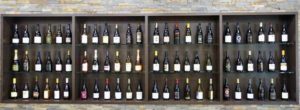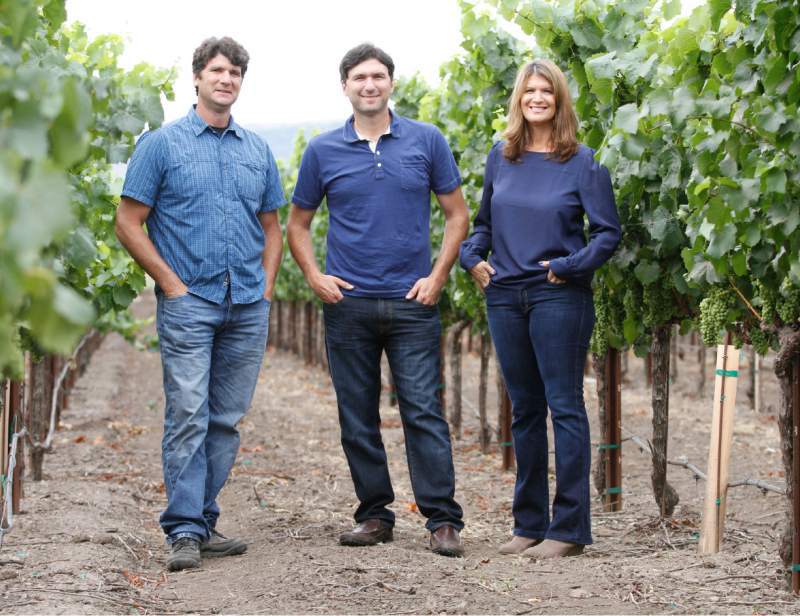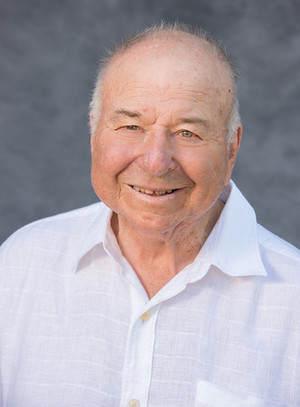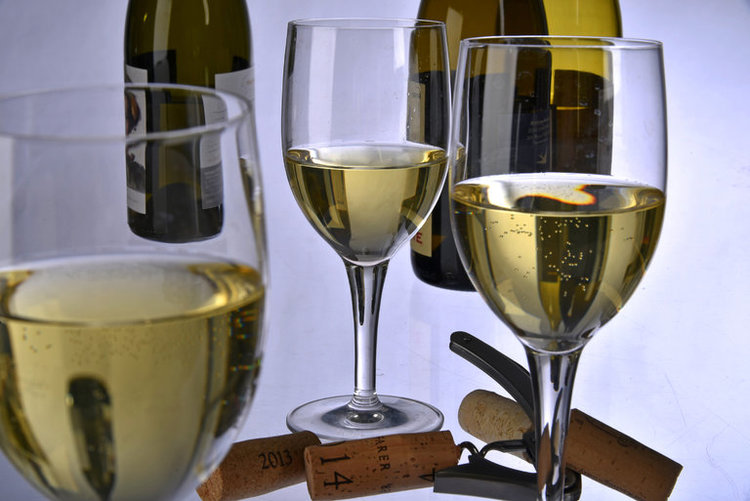Sangiacomo Steps into the Limelight
May 16, 2018
By W. Blake Gray
Wine-Searcher


© Wine-Searcher | The bottles are from the wall display in their office. All of them include Sangiacomo fruit, whether they say it on the label or not.
AFTER YEARS OF GROWING AND SELLING GRAPES, CALIFORNIA’S SANGIACOMO FAMILY FINALLY RELEASE THEIR OWN BRAND.
If you follow California wine, you might think this isn’t news: after 50 years of growing grapes in Sonoma County, the Sangiacomo family has released a new line of Sangiacomo wines.
It doesn’t sound like news because this is such a familiar name on wine bottles. Steve Sangiacomo says currently 16 wineries make 30 different Sangiacomo vineyard-designate wines, and their grapes also go into many other wines. But it is news. The family that farms 13 vineyards of more than 1600 acres in four Sonoma County AVAs has finally decided to create a wine brand of its own.
“The timing was right,” Steve Sangiacomo told Wine-Searcher. “We have a next generation coming on board. This is important from a legacy standpoint.”
I wonder how many new boutique wineries have ever had access to more estate fruit. But other Sonoma wineries shouldn’t worry about their vineyard partners hogging all the best vines, Steve Sangiacomo says.
“Wineries often have to reset their allocations,” Steve says. “Less than 0.5 percent of our vineyard production goes into these wines. No one lost any fruit.”
Visiting the Sangiacomo family to taste these wines was a treat. Brothers Mike and Steve Sangiacomo and their brother-in-law Mike Pucci are farmers foremost, and they have the weatherbeaten humility that comes with the profession: a trait that’s not always on display in modern wine country.
“You know why they call it ‘farming’?” Steve says. “Because ‘gambling’ was already taken.”
Steve and Mike’s father Angelo Sangiacomo, who still visits the offices but doesn’t speak much anymore, got into wine grapes out of desperation. His father Vittorio, an immigrant from Genoa, Italy, bought his first ranch in 1927 and acquired more land during the Depression, when it was cheap. He planted pears which he sold to the then-thriving canned pear industry. In the 1950s, when Vittorio handed over the business to Angelo, it was 350 acres of pears.
“In the ’60s, there were 50 fruit canneries near here,” Steve Sangiacomo says. “Now there are five.” Americans lost their taste for canned fruit. Angelo had to go in a different direction, so he planted his first wine grapes in 1969. A few years later he told his father, who planted most of the pear trees himself, that the pears were losing $100,000 a year.
“Pull the suckers out,” Vittorio said, according to Steve.
The surprising decision Angelo made in the 1980s was to plant mostly Pinot Noir. At the time, the grape was found in few places outside of Burgundy, and wine experts called it “the heartbreak grape” because they thought it would be impossible to capture Burgundy quality elsewhere.
“The thing about having a multigenerational wine business is you have a multigenerational wine cellar,” Steve said. (More on this in a moment.) “We had a lot of old Pinot Noirs that my father had bought, old Hanzells. They were beautiful wines and they showed the promise of Pinot Noir.”
Even if Americans weren’t ready to pay premium prices for domestic Pinot, the Sangiacomos had a market as sparkling wine producers were willing to buy the grapes.
“Sparkling got a lot of Pinot Noir in the ground,” Mike Sangiacomo says. “Once we got a lot of Pinot Noir in, people experimented with it. As clones have improved, Pinot Noir is the variety that has improved the most.”
The Sangiacomos know this as well as anyone. Every year they hold a big tasting for the producers who buy their grapes. It’s a chance for winemakers to discuss with each other how they’re making the wine, but it’s also important for the family because they hold right of approval on whether or not their name can be used as a vineyard designate.
“We’ve been trademarked since ’85,” Steve says. “Wineries have to submit samples to get approved. We have turned them down but a very small percentage. It’s art. We’re not telling people what to do. We’re looking for flaws.”
You would imagine that the Sangiacomos would have their choice of winemakers to make their first branded wines. They chose consulting winemaker James MacPhail, who sold his eponymous Sonoma County winery and now works on a number of projects.
The first vintage, 2016, has seven Sangiacomo wines: three Chardonnays, three Pinot Noirs and a Cabernet Sauvignon from their lone vineyard in Napa Valley. That wine has not yet been bottled. The Chards and Pinots are ripe and rich, but they all have good natural acidity. And you can bet they were all meticulously farmed.
“Picking at maturity is a trend,” Mike says. “Picking at ripeness, sure, but still maintaining acidity.”
The first vintage of wines come in tiny quantities, under 100 cases each. Even though the family doesn’t have a tasting room, or any plans to distribute the wines, friends in the wine industry have been signing up on their website to buy them.
“We’ve made a lot of contacts over the years,” Steve says. “People say, ‘If you ever start a wine label, put me on the list’.”
To get an idea of how strong their connections are, you can just look at the display of bottles in the entrance to their main building: many list Sangiacomo Vineyards as a designate, and some do not. It’s a who’s who of Sonoma County wine.
But it’s more fun to visit their family wine cellar – just a sprawling basement with scores of boxes of upside-down bottles of wine. It’s not one of the most valuable in northern California, because they don’t have Bordeaux first-growths or rare Burgundies. What they do have is a fascinating hodgepodge of noncollectibles that they are happy to pull out and taste.
We drank a 1974 Geyser Peak Pinot Noir that might have come from one of Angelo Sangiacomo’s first plantings – it was brittle but still had some fruit – and a 1997 Chateau Souverain Merlot that hadn’t aged all that well. Our interview concluded, the genial farming family insisted I take home a bottle of 1986 Joseph Phelps Late Harvest Riesling. I don’t know what Angelo paid for it back in the day – probably under $10 – but now it’s humble yet priceless. Like its former owners.


